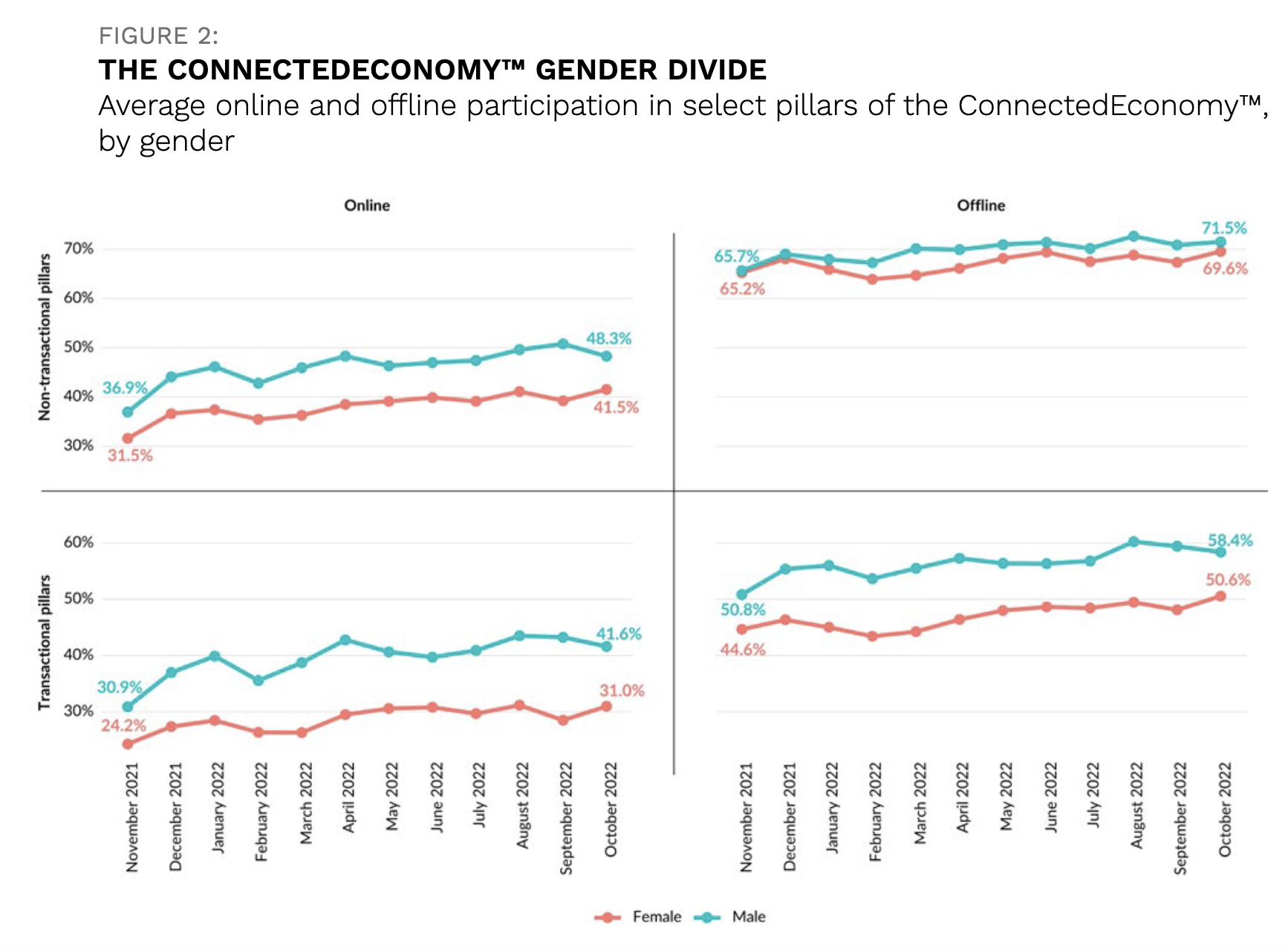Women’s Silent Spending Power Reaches Farther Than Barbie and Taylor Swift

Women’s spend share, when combined, can catapult products, people and projects.
It’s unfortunately no myth that women earn an average 82 cents of on the same dollar a man makes in the U.S., with an even starker wealth gap found across the country when it comes to issues such as property ownership. Therefore, it can be easy to forget just how powerful women as a spending bloc can be.
Men still lead when comparing participation across the select online and offline activities illustrated in PYMNTS’ “The ConnectedEconomy™ Monthly Report: The Gender Divide Edition.” When it comes to how items, goods or services are bought and sold, our data shows that consistently, men are far more likely to make transactions compared to women — online and offline.
Given this disparity, it’s sometimes easy to favor focusing on men as a spending demographic over women, since they are more likely to make purchases.
However, this strategy may prove a mistake, as The Wall Street Journal noted on Thursday (Aug. 10), describing how women “owning the summer” is being reflected in this season’s successes.
Barbie has already surpassed $1 billion at the box office and is set to be the highest domestic film of the year while giving boosts to both Birkenstocks and Crocs. Taylor Swift’s “Eras” tour is poised to break concert records to be the first making over $1 billion, while Beyonce’s “Renaissance” tour similarly inspired women to travel to different cities to see multiple performances.
And this was only one season of special events. This estimation of purchasing power doesn’t include the “silent” purchasing power of women as well. For example, who makes the majority of back-to-school shopping choices? While men have come a long way in making up this gap in domesticity, doing over half of online grocery shopping, for example, women still make a strong slice of household purchasing decisions when in a partnered relationship, regardless of who has earned the income funding the purchases.
Though it is true that women lag behind men when it comes to rates of transactions both digitally and offline, this summer has shown that there’s strength in unity — at least when it comes to purchasing behavior.

